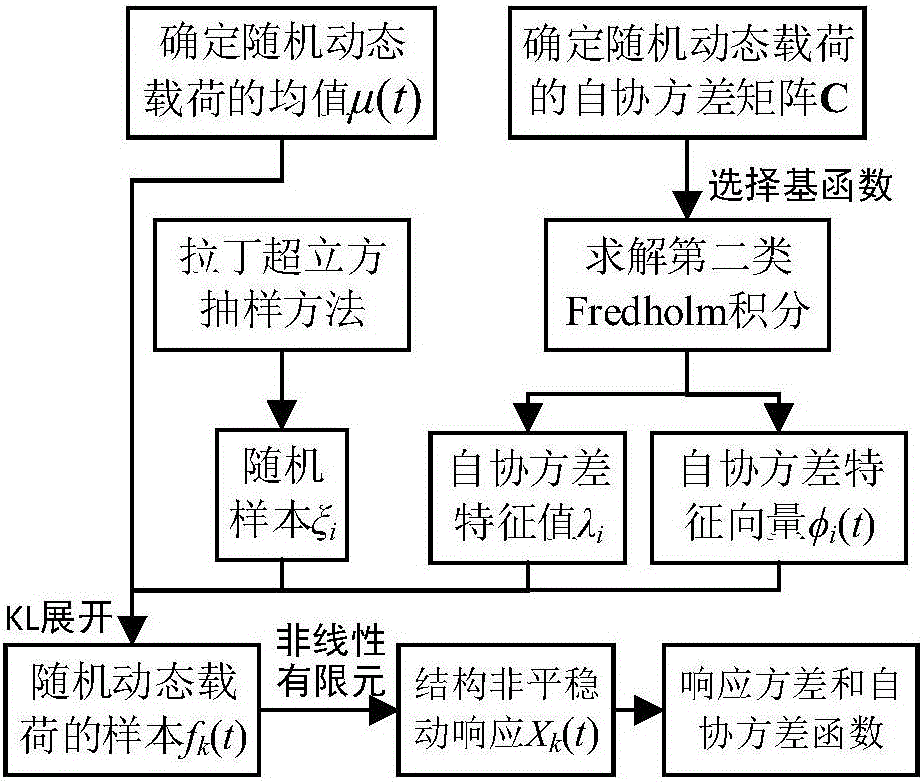Non-stationary random dynamic response analysis method considering geometric nonlinearity of structure
A geometric nonlinear and response analysis technology, applied in special data processing applications, instruments, electrical digital data processing, etc., to achieve the effect of solving non-stationary random dynamic response analysis
- Summary
- Abstract
- Description
- Claims
- Application Information
AI Technical Summary
Problems solved by technology
Method used
Image
Examples
Embodiment Construction
[0035] like figure 1 As shown, this embodiment specifically includes the following steps:
[0036] (1) Calculate the mean value and autocovariance matrix according to the non-stationary random dynamic load.
[0037] Among them, the mean of the non-stationary random dynamic load F(t) is: μ(t)=E[F(t)]; the autocovariance matrix is: C(t 1 ,t 2 )=E[(F(t 1 )-μ(t 1 ))(F(t 2 )-μ(t 2 ))]; where, t 1 , t 2 is a time variable, and E[·] means to seek the expected value.
[0038] Taking a cantilever beam structure as the research object (such as figure 2 shown), and its geometric parameters and material parameters are shown in Table 1. The mean value is zero, the autocovariance is a random uniformly distributed random dynamic load in the form of modulation index, the number of load steps is 1000, and the load duration is 1s. Then the mean value of the random dynamic load is μ(t)=0, and the autocovariance matrix is:
[0039] Table 1 Material parameters of the cantilever beam...
PUM
 Login to View More
Login to View More Abstract
Description
Claims
Application Information
 Login to View More
Login to View More - R&D
- Intellectual Property
- Life Sciences
- Materials
- Tech Scout
- Unparalleled Data Quality
- Higher Quality Content
- 60% Fewer Hallucinations
Browse by: Latest US Patents, China's latest patents, Technical Efficacy Thesaurus, Application Domain, Technology Topic, Popular Technical Reports.
© 2025 PatSnap. All rights reserved.Legal|Privacy policy|Modern Slavery Act Transparency Statement|Sitemap|About US| Contact US: help@patsnap.com



